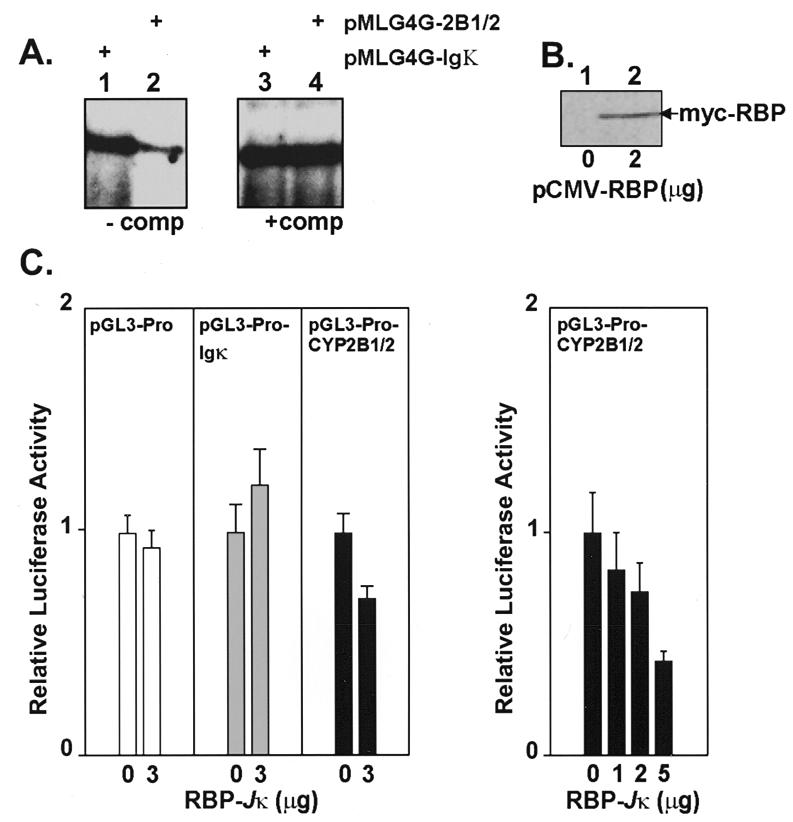Figure 6.

(A) The NF-κB element from the CYP2B1/2 promoter represses transcription from the adenovirus major late promoter in vitro. Adenovirus major late (AdML) promoter–G-free cassette in vitro transcription templates containing two NF-κB Igκ (pMLG4G-Igκ) (lanes 1 and 3) or NF-κB 2B1/2 (pMLG4G-2B1/2) (lanes 2 and 4) sites were tested for activity in in vitro transcription experiments using HeLa cell nuclear extracts. Reactions were performed in the absence (lanes 1 and 2) or presence (lanes 3 and 4) of the NF-κB 2B1/2 oligonucleotide competitor. (B) A myc-tagged RBP-Jκ construct (pCMV-RBP-Jκ) overexpresses RBP-Jκ in COS-7 cells. RBP-Jκ protein (68 kDa) was detected in extracts prepared 48 h post-transfection using anti-myc antibodies. (C) Overexpressed RBP-Jκ protein reduces expression from an SV40 promoter construct that contains the CYP2B1/2 NF-κB site. The left panel shows that a control vector (pGL3-Pro) and an IgK NF-κB site vector (pGL3-Pro-Igκ) are not affected by co-transfection and overexpression of RBP-Jκ in vivo, whereas a construct with the CYP2B1/2 NF-κB site (pGL3-Pro-CYP2B1/2) is reduced. The right panel shows that repression of pGL3-Pro-CYP2B1/2 is dependent on the amount of co-transfected pCMV-RBP-Jκ.
